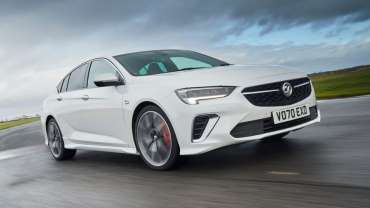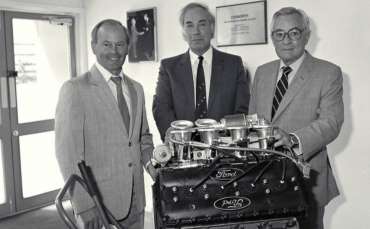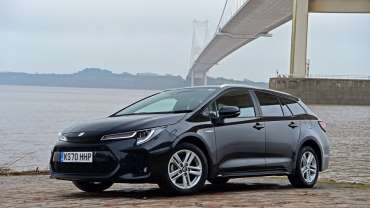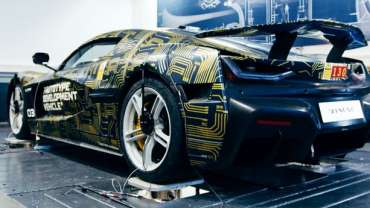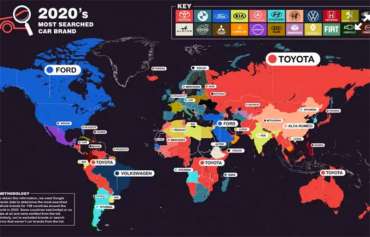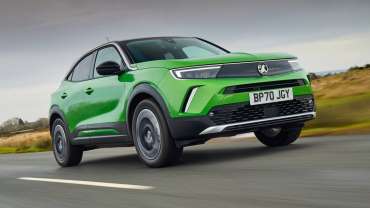
Worldcarblog.com
Lada Niva 4x4 in a completely unique edition
Often tied to some of the best motorcycle models in the world, the Austrian company in charge of tuning them presented its new project, completely different from everything we have had the opportunity to see so far and something that came out of its four-wheel garage ...
The new four-wheeler of the company Vagabund, is based on the Russian model Lada Niva, a simple and very powerful off-road vehicle, designed to be repaired on the ground with ease and functional to the last drop of fuel.

Deciding to make this overlander even more robust, the tuning house created a series of improvements by smashing the car to the last screw and reassembling it. In the process of redesign, the roof trunk from the F-Desing model was added, the suspension was raised and the front bumper was removed, while the rear one was replaced with a much larger variant.
New off-road PIAA headlights with 3D printed caps and a set of new Dotz Pharao wheels have also been added to the overall project, and the new wheels now follow the 205/75 R15 large Malades Cobra tires. In the end, the Russian legend got a new steel-gray finish with black contrasting doors on each side, specially designed to advertise the house of Vagabund Moto through large markings placed on the lower segments.
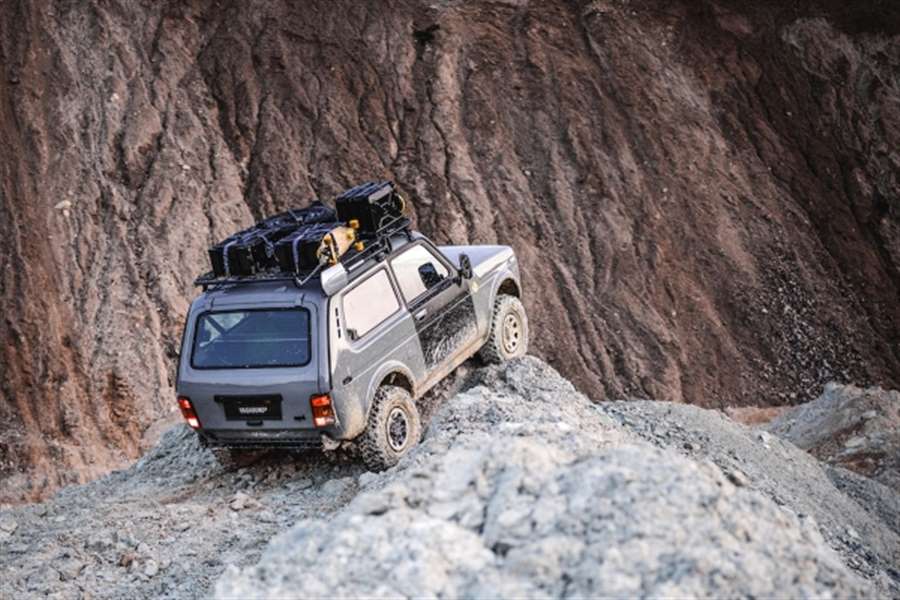
While this is the company’s first specially designed car ever, after numerous two-wheeler projects completed so far, it will definitely not be the last, with a focus on individual plans that belong to the future and are tied to models like the Land Rover Defender or Toyota Land Cruiser.
Vauxhall Insignia hatchback review
"The latest Vauxhall Insignia is sharper to look at and drive, while offering lots of equipment for the price"
The Vauxhall Insignia targets the very best family cars on sale and in many ways it betters them. This alone should make it a hit for Vauxhall but it still faces lots of competition – and not just from its own class.
A facelift in early 2021 gave the Insignia a midlife refresh and saw the ‘Grand Sport’ part of the name dropped. The model line-up was simplified and a tweaked range of engines and upgraded technology was introduced in an attempt to keep the Insignia competitive with rivals like the Ford Mondeo, Peugeot 508 and Skoda Superb.
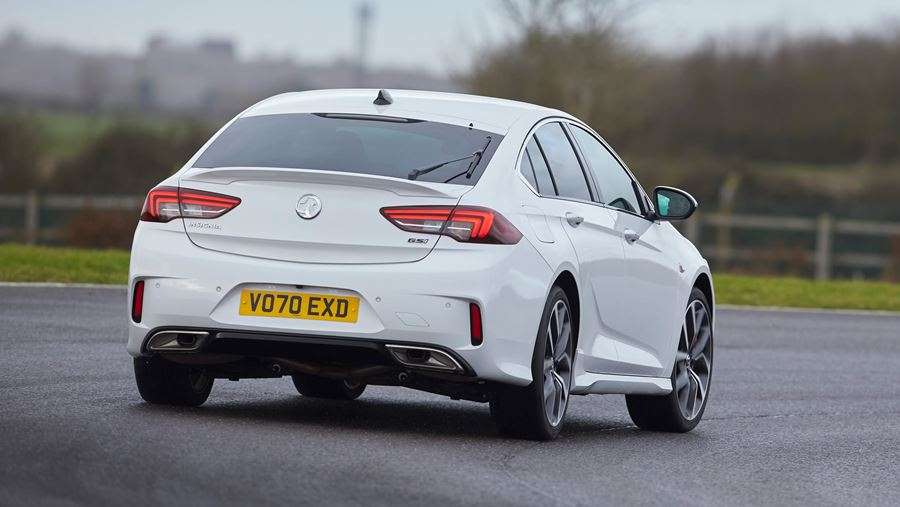
Best family cars
Cars like the Insignia and the Mondeo have fallen out of favour in recent years, with buyers instead opting for more upmarket models like the Audi A4, BMW 3 Series and Mercedes C-Class. This has led sales of more mainstream large family cars to dwindle, with brands like Nissan, Renault and Citroen discontinuing their models in this segment altogether. Instead manufacturers have turned to crossovers and SUVs, with models like the Nissan Qashqai, Ford Kuga, SEAT Ateca and Skoda Karoq hoovering up customers.
Despite these changing trends, the latest Insignia is an accomplished car. It’s lighter than its predecessor and costs far less to buy than some rivals. For such a practical car, it’s certainly keenly priced and Vauxhall offers it with a decent choice of turbocharged petrol and diesel engines. However, the lack of a hybrid powertrain in the Insignia line-up is noticeable, with rivals such as the Mondeo, Passat, 508 and Superb all boasting a hybrid or plug-in hybrid engine option. While Vauxhall has yet to officially confirm, it’s thought the petrol/electric powertrain from the Grandland X PHEV will make it into the Insignia in the future.
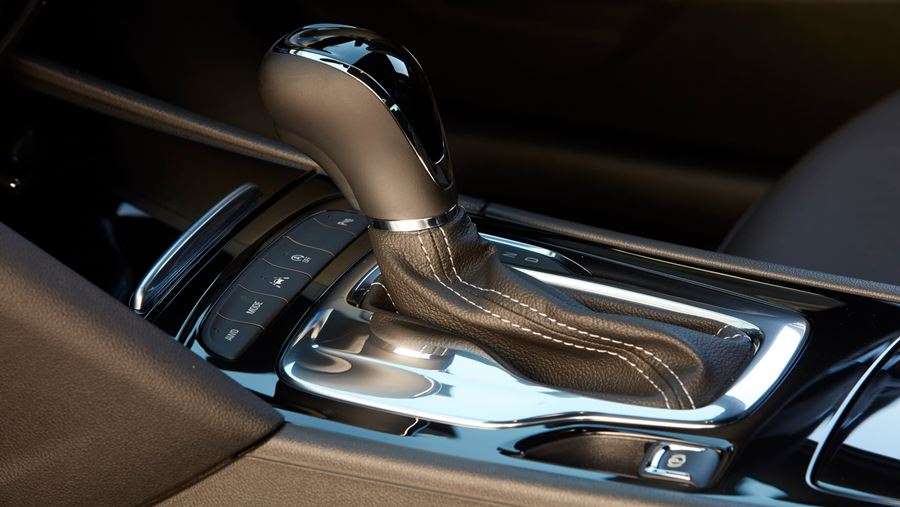
You can also count a full roster of safety kit and handy Apple CarPlay and Android Auto smartphone connectivity among the car's attributes.
Diesel engines have traditionally been popular in cars of this size and the entry-level 120bhp 1.5-litre three-cylinder is very capable, officially managing over 60mpg when matched with a manual gearbox. Performance is also decent, with 0-62mph taking 10.7 seconds. The more powerful 172bhp 2.0-litre four-cylinder diesel is available from the SRi Nav trim level upwards, making it considerably more expensive to buy. It's also capable of over 60mpg, and offers better performance, taking 8.2 seconds to get from 0-62mph.
Vauxhall’s 2.0-litre engine is best suited to drivers who don’t have high annual mileages. Both engines are fitted with a nine-speed automatic gearbox, and the 197bhp version is only available from the SRi VX-Line Nav trim upwards, making it a costly proposition at nearly £35,000. Above this is the 227bhp engine, which is exclusive to the flagship GSi model. It gets an advanced four-wheel drive system and a long equipment list but pushes the starting price to over £40,000. Both versions of the petrol Insignia manage 0-62mph in around seven seconds, with claimed fuel economy of 30-37mpg.
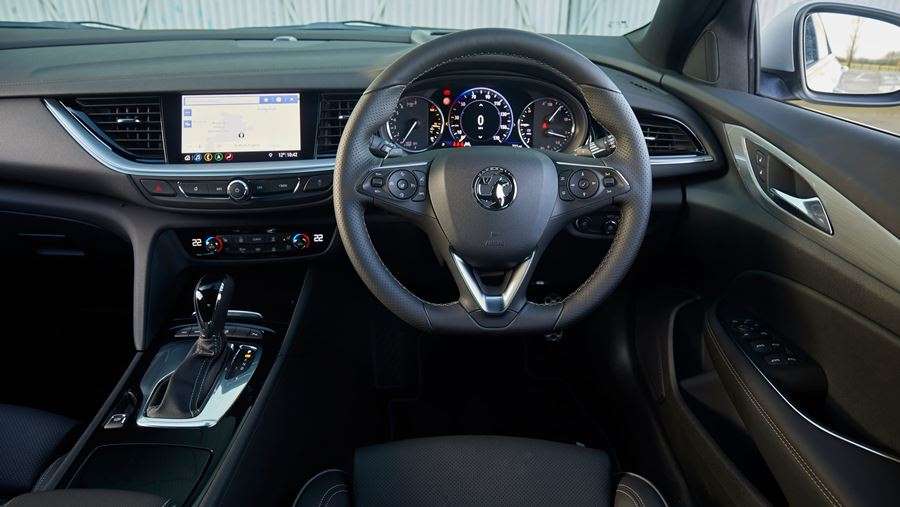
Approaching the Insignia, it’s immediately apparent that this is a big car. It’s only 4cm shorter than the latest BMW 5 Series from the class above, and is a similar width as well. It’s also a very low car; Vauxhall has dropped the driving position by three centimetres compared to the outgoing Insignia.
The low-slung design gives it a direct sense of connection with the road, which is matched by the overall driving experience. The steering is nicely weighted and communicates what’s going at the wheels, the suspension firmness is well-judged and you get a strong sense that the lessons learned from the latest, sharp-handling Vauxhall Astra have been passed on to the larger Insignia. Among front-wheel-drive rivals, though, the latest Skoda Superb feels a little sharper to drive, while the rear-drive BMW 3 Series remains the handling champ.
The Insignia’s significant stature means interior space is excellent in general, with huge amounts of legroom – front and back – and a well-shaped boot. Rear headroom is a little tight thanks to that low profile, however, and while the Insignia may come close to matching the cavernous Skoda Superb for interior space, the Superb’s greater height means its back seats are more comfortable for taller adults.
Vauxhall now offers five trim levels with the Insignia, but even entry-level SE Nav cars come with LED headlights and high-beam assist, all-round parking sensors, cruise control, a leather steering wheel and a seven-inch infotainment touchscreen, complete with sat nav, Bluetooth, Apple CarPlay and DAB radio. Moving up through the range adds extras like a larger touchscreen, a Bose premium stereo system, a rear spoiler, automatic wipers and upgraded interior trim details; top-spec Ultimate Nav and sporty GSi Nav cars come with Intellilux LED Pixel headlights and leather seats.

The pre-facelift version of the Insignia achieved the full five stars in Euro NCAP’s independent safety assessments, helped by the standard fitment of lane-keeping assistance and an autonomous emergency braking system that works at urban speeds.
Vauxhall Insignia hatchback - MPG, running costs & CO2
Strong fuel economy, reasonable company-car rates and a vast dealer network make the Vauxhall Insignia cheap to run and easy to live with
Cars are products that – in general terms – are hugely improved with every update. The Vauxhall Insignia is an excellent example of this upward trend. It’s lighter than the previous generation and its engines are more efficient, which means it’ll be cheap to run. It’s also, somehow, far less expensive to buy than the old Insignia, and undercuts rivals like the Passat and Superb by a considerable margin.
Vauxhall Insignia MPG & CO2
Company-car tax is likely to be the make-or-break point for the Insignia, as the vast majority of sales will go to fleet buyers; the news here is excellent.
Because tax obligations for company users are determined by the car’s price combined with its CO2 emissions, the Insignia’s low list price works in its favour. The Insignia engine with the lowest CO2 emissions – the 120bhp three-cylinder turbocharged 1.5-litre diesel - is capable of 61.4mpg while emitting 122-144g/km, making it a decent choice for company-car drivers thanks to a mid-range BiK rating. Every facelifted diesel Insignia is now RDE2 compliant, meaning they are exempt from the additional 4% Benefit-in-Kind (BiK) surcharge.
The Volkswagen Passat and Skoda Superb are available with standard petrol and diesel engines that occupy similar BiK brackets, with their respective plug-in hybrid models sitting in lower BiK bandings. However, both of these rivals' list prices are significantly higher than the Insignia’s, with the PHEV versions costing a third or more to buy at least.
Insignia buyers get a choice of two petrol engines and both are equipped with a nine-speed automatic gearbox. The 197bhp 2.0-litre petrol officially returns 33.1-37.7mpg, while the 227bhp version, which is reserved for the range-topping four-wheel drive GSi model, is almost as efficient, managing between 30.3mpg up to 35.3mpg. Emissions for the petrol engines range from 167g/km to 200g/km, placing them in the upper BiK bandings for company-car drivers.
An entry-level 143bhp 1.4-litre petrol is expected to join the line-up later this year and be capable of around 45mpg. A hybrid model is also expected to arrive, which is likely to borrow the 1.6-litre petrol engine and electric motor used in the Grandland X PHEV.
The diesel engine pairing offers far greater efficiency, with the entry-level 1.5-litre three-cylinder capable of 61.4mpg when equipped with a manual gearbox. Go for the automatic box, and economy falls to 56.5mpg. Emissions range from 121-145g/km for the manual, rising to 130-150g/km for the auto depending on the wheels and specification chosen.
According to Vauxhall, opting for the 2.0-litre four-cylinder diesel engine delivers identical fuel economy, with the manual capable of 61.4mpg, which falls to 56.5mpg when you opt for an auto. Emissions range from 121g/km for the most basic version with a manual gearbox, rising to 149g/km for a higher trim model with an automatic.
One word of warning: if the facelifted Insignia is like its predecessor, expect secondhand values to be somewhat unimpressive – although this won’t be of concern to company-car customers.
Every version of the Insignia will cost £150 a year in road tax, but if you go for the top of the range sporty GSi model, you’ll find yourself over the £40,000 barrier and liable for an additional £325 a year in VED.
Insurance group
The 1.5-litre entry-level diesel Insignia with 120bhp starts in group 17, while the 2.0-litre 172bhp version sits six places higher in group 23. The 197bhp petrol, meanwhile, starts from group 27, with the range-topping 227bhp GSi model placed in group 30.
Warranty
Vauxhall’s three-year/60,000-mile warranty is average and nowhere near as generous as the five-year guarantees offered by Hyundai and Toyota, nor the seven-year policy provided by Kia.
Servicing
The Insignia requires servicing every 20,000 miles or once a year, whichever comes first, and Vauxhall’s fixed-price servicing packages and maintenance jobs should make taking care of the Insignia an easy and reasonably affordable process. Vauxhall Care costs around £20 per month, including three services, three years of roadside assistance and the first MOT.
Source: carbuyer.co.uk
Top 5: road cars signed by Cosworth
Often in the world of cars, a story is repeated that begins something like this: "When you and those characters started this or that year, they didn't even know that…".
Well, this story won't start like that, because the brilliant minds in front of Cosworth foresaw the future very well and knew even better what they were doing. And this thesis is shown by these road cars with their signatures.
So here is a brief cross-section of the best that this ingenious duo has offered for road use…
There is no doubt that Mike Costlin and Keith Duckworth have become immortal since 1958. There is also no doubt that the engines and other components of this ingenious duo have been revered by millions of Ford fans and beyond over the years. Because what Cosworth has achieved in the world of engine optimization, refinement, performance increase and construction of legendary race cars, practically no one has ever managed to achieve.
Having Ford, Mercedes-Benz, Audi, and even a Cosworth-signed Subaru in my possession has always been something special. And the owners of various Sierra, Escort and other other cars were rightly proud of their cars.
Because Cosworth, despite all its flaws (and there were some), has always fascinated with its ingenious solutions, crazy ideas and revolutionary machines that power some of the most respected cars of all time.
Both on the street and on the track.
True car enthusiasts, whose coexistence with cars does not come down to blind worship of one brand or worse, one model of one brand, know very well what this legendary company has signed from 1958 until today.
But some of you esteemed readers might be surprised with our selection as part of Cosworth’s list of the best road races.
So there is no choice but to start with this short and sweet list of really special road races with Cosworth's signature…
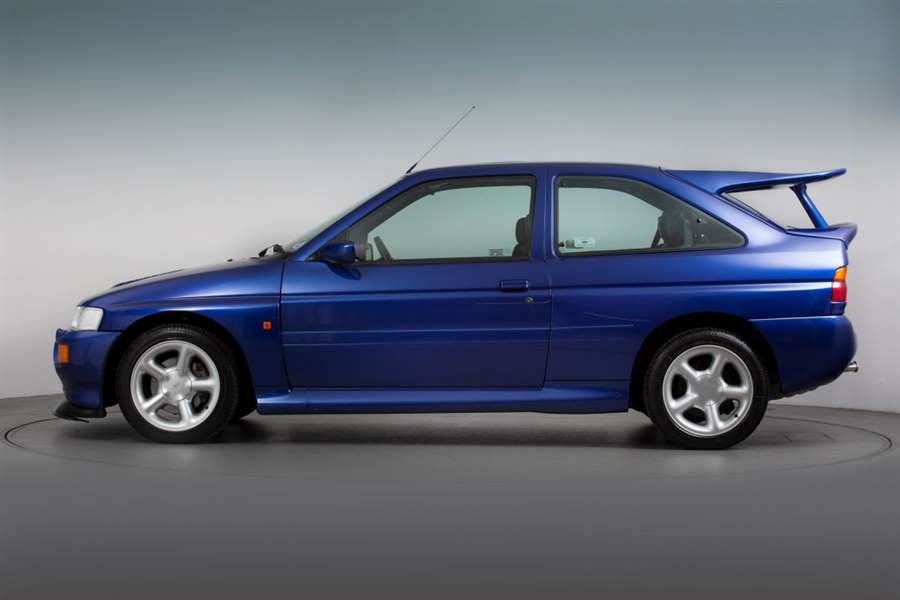
Number 5: Ford Escort RS Cosworth
"Cossie"… "Cossack"… "Escort on steroids"… Indeed, this car has certainly been called by car enthusiasts over the years.
But all these names, adjectives, suffixes and slang names have one common denominator. And that comes down to one of the most special angry compacts of all time.
For many, this car marked an entire era of racing on the dirty and dusty tracks of the World Rally Championship.
For many, the RS Cosworth was the "car" that made them indulge in the world of cars in their entirety.
Many also swear by the absolute superiority of this Escort compared to the competition from that wonderful time.
And maybe all those many are right, but Ford with this car in its road edition did not intend to break any records, nor was it expected that this icon from the nineties and a few decades later would be adored by a huge amount of people.
The idea was to accomplish the series needed to comply with the homologation rules and that’s usually it.
But despite this, the Escort RS Cosworth still stands on the pedestal of the most special cars of all time - although through some figures, the wickedly high price and often questionable durability may not deserve it.
The Cossie, with its body just like an ordinary Escort, looked like a neighborhood hooligan.
His character was like the once famous movie diva whose alcohol drank his brain and reflexes, while due to frequent breakdowns, this Ford fell out of the car, which caused its owners to go bald unplanned.
But the two-liter engine with its 227 horsepower and all-wheel drive was absolutely fascinating even with a Turbo-hole the size of a Marianas furrow.
And then there’s that ingenious and equally oversized spoiler on which laundry could be dried.
Basically, if there is an icon on four wheels in the world that can be recognized from any angle, then it is precisely the Escort RS Cosworth.
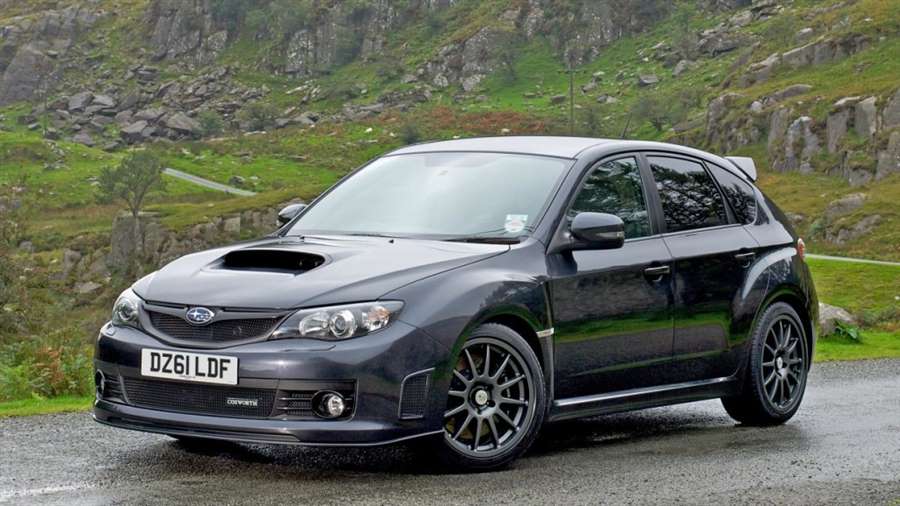
Number 4: Subaru Impreza WRX STi CS400
Yes… Cosworth had his fingers in this legendary Japanese car as well. And you may not have known it, but it still doesn’t negate that fact, because this car really did carry Cosworth’s signature.
The idea was simple: to produce something really special and thus at least partially try to annul all the negative reactions that Impreza GR was collecting even in its strongest version.
Because the Impreza has always been a sedan, while the third generation of this model is presented in the form of a compact with five doors.
And yes… This Impreza was as disgusting to watch as it was shocking to comprehend. Therefore, Subaru struggled in all possible and impossible ways with various variations on the special editions of this body version for the Impreza, before the definitive capitulation and the release of the sedan (GV) version on the market.
But before that happened, for many the ultimate Impreza of the time
the woman was created in collaboration with Cosworth.
Basically, the ugly compact still wore vulgar spoilers and a design signed by the correctional team from the subject "design and engineering". I guess that’s why the focus this time was definitely shifted under the hood under which Subaru’s heart was pounding with Cosworth’s pacemaker.
The four-cylinder, 2.5-liter engine at Cosworth is disassembled into "simple factors" and then rearranged from start to finish. And the resulting condition was shaped into an EJ257 engine with almost 400 horsepower.
With those 400 horsepower combined with a billion minor and minor minor revisions to the chassis, suspension, and powertrain and braking system, the Impreza WRX STi CS400 accelerated to 100 km / h in 3.7 seconds. That is, in translation more convincing than some five times more expensive super-cars of that time.
But despite this, this very interesting project was very quickly doomed. Because the price of £ 50,000 in the UK was simply exorbitant.
Either way, Cosworth has turned this Impreza from an ugly duckling into a dark object of desire for many.
And that’s actually quite enough to say as a conclusion about this car.
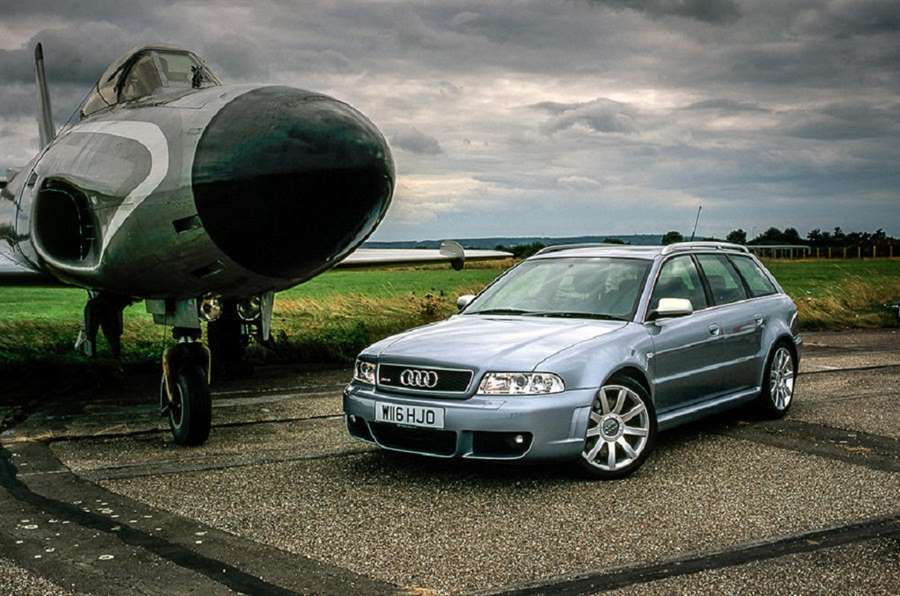
Number 3: Audi RS4 (B5)
Admit that you had no idea that Cosworth was also fiddling with this mobile box from Ingolstadt.
But admit it or not, history confirms that Audi without Cosworth would never have presented the successor to the legendary RS2 - at least not in the form in which we know it and with which we are fascinated.
Now… You must be wondering how this somewhat obscure collaboration actually came about.
So here is the answer to that question…
Namely, as Cosworth as a company was on the verge of bankruptcy in the late 1990s, at one point the idea was born to split the company into two parts. The newly formed divisions were oriented separately towards road cars and those with which the team raced along the track.
In those years, Audi persistently tried to create a successor to the legendary RS2, so instead of cooperating with Cosworth, it simply decided to buy the road division of that company and throw the employees into the fire. And look at the miracles - it turned out great.
Because on the one hand Cosworth did not put the key in the lock forever, while on the other hand Audi produced one of the most special models of all time. And a model with a coat of arms.
Many swear that the first RS4 is also the last real Audi with the correct pedigree and without unnecessary marketing nonsense. Because this caravan already looked serious with its appearance, while driving it was able to embarrass many times more expensive, nominally faster and much more famous super-sports cars on the planet - by driving kids to school and Labradors to the toilet.
The 2.7-liter V6 engine was already a respectable force on the road. And after Cosworth's interventions on the engine in question (especially on the pistons and the exhaust system) with its 380 horses, this really became one of those cars that made the "haters" of the caravan want to have one in the yard.
acceleration to 100 km / h took less than 4 seconds, while top speed was limited to the agreed 250 kilometers per hour in Germany.
So even though I guess megalomaniacs and number addicts will say the proverbial "meh" and wave their hands, the Audi RS4 still remains one of the most brutal family cars the world has ever seen.
And without Cosworth, all this would not be possible.
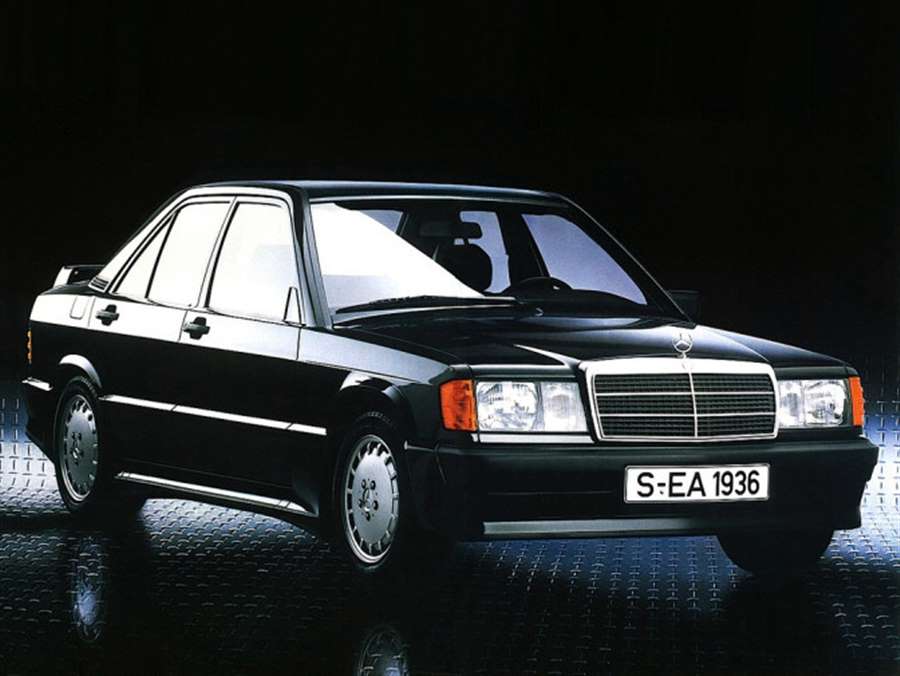
Number 2: Mercedes-Benz 190E 2.3-16
That by any chance AMG was an official part of Mercedes' three-spoke empire, and that in 1983 the company's employees had the time, will and desire, who knows what the story of this car would look like.
But as AMG was not part of Mercedes' three-legged empire at the time, and as the company's employees were on a cigarette-two break just then, Mercedes-Benz dared to start a partnership with Cosworth.
And the result state was shaped into one title title as part of the DTM competition from the early 1990s, and countless victories during the seasons that preceded that success.
But before that, this seemingly ridiculous fruit of collaboration between crazy Englishmen and anal-precise Germans also set several world records, including the one of 50,000 kilometers traveled in one piece and at a (combined) speed of almost 250 kilometers per hour. And without any malfunctions, without a general breakdown of the system and without any service interventions.
So, here is an example that confirms that Cosworth can really put his signature on something permanent and high quality, so the critics of this Mercedes derivative of the 190 and the collaboration with Cosworth were soon (and forever) gagged.
Mercedes-Benz 190 E 2.3-16 nowadays has a cult status. And deservedly so. Because from those times until today, it is not a common case for a company to present a car that is so close to the "ordinary" version, and at the same time stands fourteen light years away from it.
Because despite the fact that the 190 with its 185 horses and Cosworth's signature is not even the fastest limousine of its time, at the same time it clearly showed that it is one of the most special limousines of all time.
And by all accounts, it will remain so.
And rightly so.
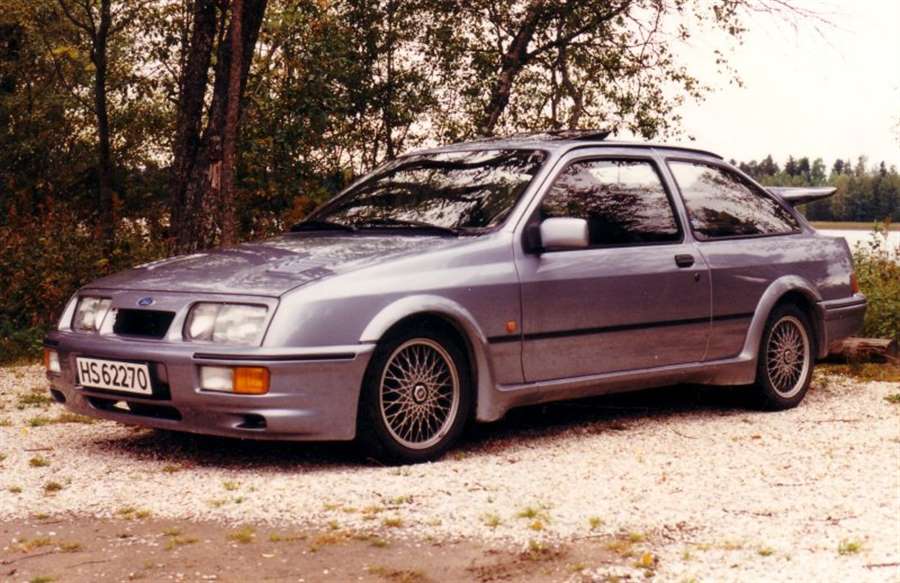
Number 1: Ford Sierra RS500 Cosworth
"As it was in the beginning, so it is now."
Because Sierra in this version with Cosworth’s signature literally kicked her ass wherever she appeared.
Europe has submitted to this Sierra several times and in several different domains of motorsport.
Australia too, and in the US and Japan this Sierra has earned an extremely high rating.
In a world of dust and dirt, Sierra has raised some of the best drivers of all time, of whom perhaps best to highlight is the legendary aggressor named Colin McRae.
The pedigree itself was present from some already past times in which Cosworth together with Ford played with several generations of Escort RS, so Sierra "only" continued that story. But the most special part of the "story" about the Sierra RS500 Cosworth was recorded on the street, ie among the "ordinary" people. Because it is in this segment that this car, despite a kind of handicap compared to competitors such as the BMW M3 (E30) and Audi UrQuattro, turned out to be a moral winner.
Namely, while Audi sold its UrQuattro in micron series and at the prices of preserved kidneys on the black market, and BMW moved the produced copies from garage to garage due to the lack of produced M-three models, Ford provided a larger production series for the Sierra RS Cosworth.
And with that, the Sierra took over the roads because of its accessibility, so it soon gained the status of a national hero in England. And that status holds to this day, when some of the preserved specimens at auctions record six-digit figures. And the version marked RS500 with its 500 produced copies only added that obligatory factor of exclusivity for this already loved and desired car.
The body extensions and the oversized rear spoiler from this uncompromising car certainly made a different beast than the ones moms, dads and taxi drivers rode on a daily basis. Although some still resent that the two-liter engine never got more than 227 horsepower, this is still the Sierra, which to this day is the alpha and omega for all those for whom the "fast Ford" is the ideal in the world of cars.
Ford produced a legend with this car, while Cosworth gave that legend a truly special beast with the character of an absolute savage. Ie. one of those cars that only the most capable behind the wheel could deal with in the right way.
And that’s why it’s the best road car Cosworth has ever put its signature on.
Do you agree?
New Suzuki Swace 2021 review
Japanese maker rejoins the family car market with the badge-engineered Suzuki Swace estate
As with the Toyota Corolla Touring Sports on which it’s based, the Suzuki Swace is a comfortable and frugal estate car that’s relaxing to drive. The Swace does without some of the Corolla’s more luxurious features, but it only offers a minimal financial saving for the sacrifice. Drive a hard bargain at a Suzuki dealer, and the Swace could still be a worthwhile purchase.
If you think the Suzuki Swace looks strangely familiar, you’d be right. Apart from the Suzuki badging, this new estate is virtually identical to the Toyota Corolla Touring Sports.
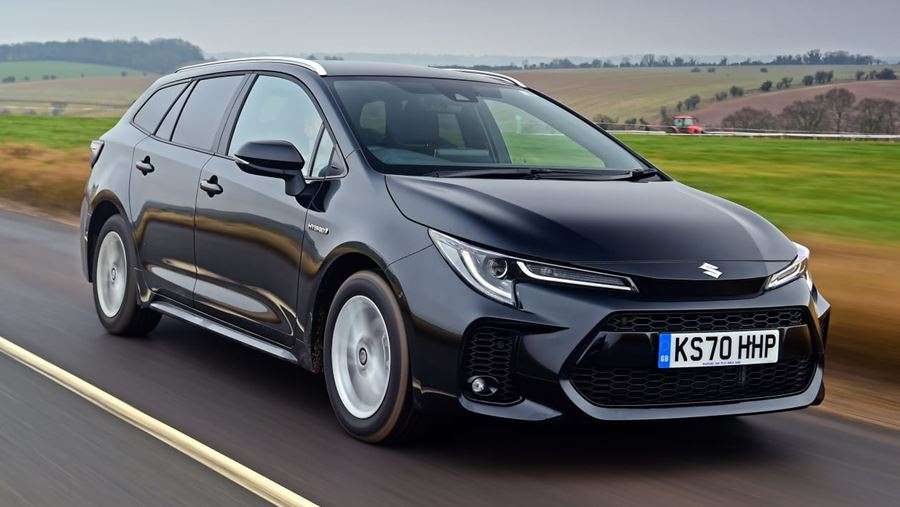
The Swace is the second Suzuki to copy Toyota’s homework (the first was the Across plug-in SUV) as part of an alliance between the two brands. The partnership should let Toyota benefit from Suzuki’s small-car know-how, while Suzuki gets to make use of Toyota’s hybrid tech. To that end, the Swace is even built in the UK on the same production line as the Corolla.
Cosmetically, what little has changed is mainly at the front: the tweaked bumper gets new grilles and a repositioned logo. Less effort has gone into hiding the car’s origins elsewhere. The hybrid badges on the doors are in Toyota’s typeface, while the Suzuki logo on the boot looks like it’s been glued straight over the top of the Toyota badge. Branded centre caps aside, the standard 16-inch alloy wheels fitted to both Swace trims are the same as those used by the entry-level Corolla Icon.
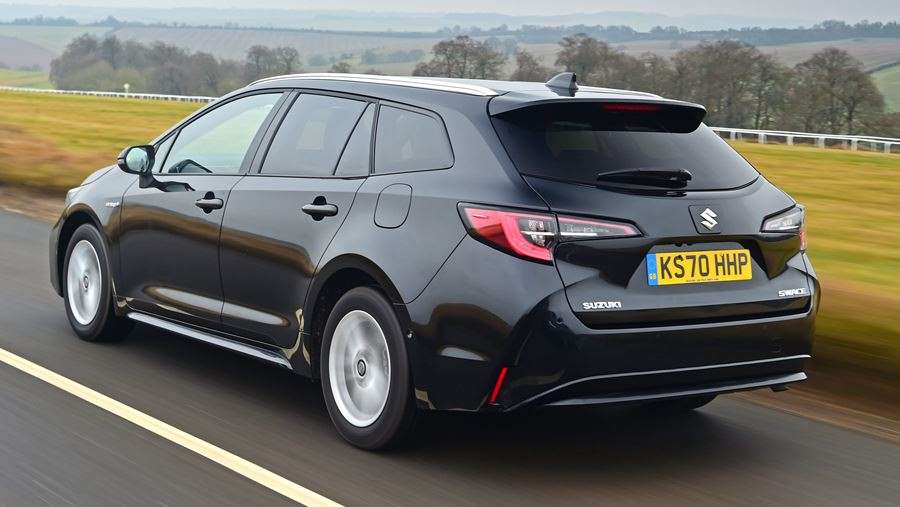
Inside it’s much the same, too. That’s no bad thing, because the cabin is well built, comfortable and roomy. A Skoda Octavia has the edge for space and quality, though.
Suzuki is only offering the Corolla’s smaller 1.8-litre hybrid set-up in the Swace. The petrol engine makes 101bhp and 142Nm, while the 71bhp/163Nm electric motor either operates alone for short distances or assists the combustion engine for a combined output of 120bhp. Drive is sent to the front wheels through a CVT gearbox.
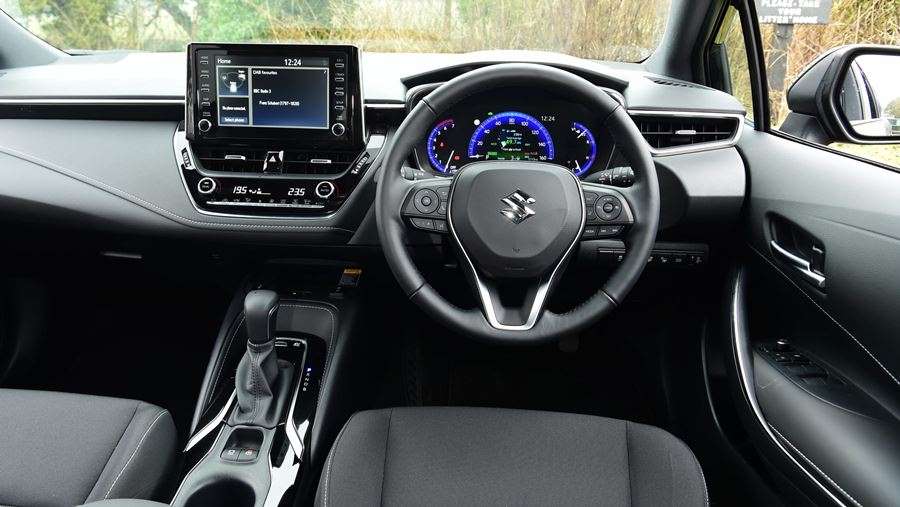
It’s a unit that does its best work in town, where a mix of light acceleration and gentle deceleration using the regenerative braking allows plenty of urban mileage to be covered in all-electric mode. It’s not unreasonable to at the very least match Suzuki’s official 64.2mpg figure in such areas. If there’s enough charge in the battery, it’s possible to select full EV mode – although once the tiny range is exhausted the petrol unit hums back into life.
At higher speeds, the engine starts to let the side down. Despite the electric boost, it never feels that strong, and hard acceleration causes an unpleasant drone as the CVT gearbox holds the revs at the four-cylinder unit’s 5,200rpm peak output. This aside, the Swace drives sweetly. It’s not fun by any stretch, but it handles tidily and rides smoothly – no doubt helped by the chunky sidewalls of those tyres around 16-inch rims.
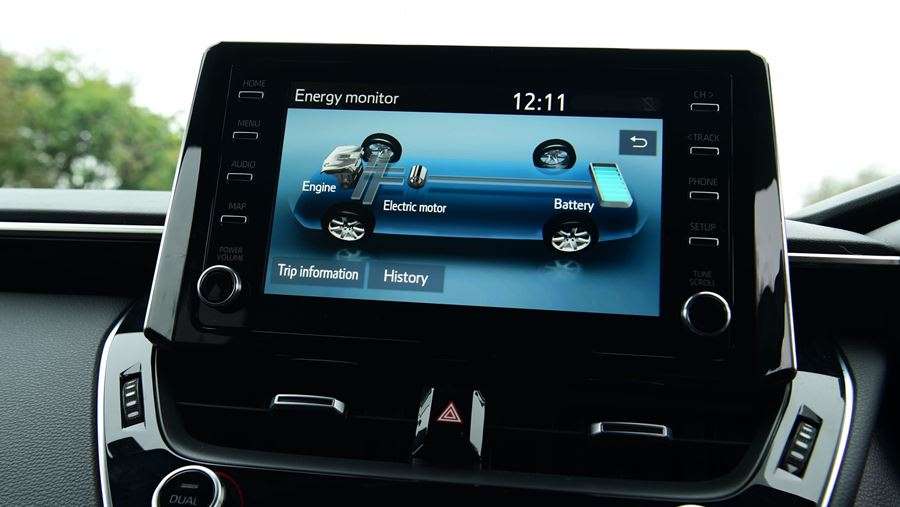
The Swace is offered in two trim levels: SZ-T and SZ5. The SZ-T kicks the range off from £27,499, and gets a long kit list that includes LED headlights, heated front seats and steering wheel, a reversing camera, traffic-sign assist and adaptive cruise control.
The SZ5 costs £29,299. It adds blind-spot monitoring and rear cross-traffic alert, plus parking sensors all round, intelligent park assist, wireless smartphone charging and upgraded LED lights.
In terms of spec, these two models rank closely with high-grade versions of the Corolla Touring Sports line-up, although they do without some of the fancy trinkets available to Toyota buyers. Neither version, for example, gets built-in satellite navigation, although the eight-inch touchscreen features Apple CarPlay and Android Auto in both trims.
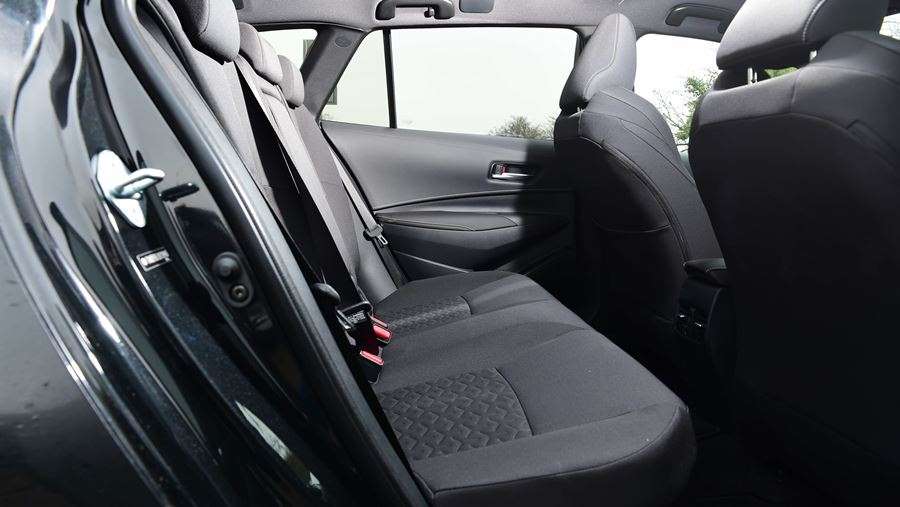
The SZ5 is closely matched to the top-spec Corolla Excel, but does without leather trim and has 16-inch alloys instead of 17-inch items. Not vital of course, but the Toyota is only £711 extra, which isn’t much of a difference.
Then there’s the warranty. All Corolla buyers have the peace of mind of five years or 100,000 miles of cover; the Swace only has a five-year/60,000-mile package for the hybrid tech, and just three years on the rest of the car.
Source: autoexpress.co.uk
Rimac C_Two: Final setting for path and track
The new Rimac C_Two, which is getting closer to series production, proves that a top sports car does not have to be reserved only for the tracks. Proof of this is the final fine-tuning of the suspension, which must behave equally well on the road and on the race track.
According to Vidiauto.com, in cooperation with KW Suspension, the dynamic behavior of the C_Two model is calibrated countless times. It must satisfy many types of surfaces - a perfect race track, open road and highway, and all use special equipment to develop support. This equipment enables computer preparation of virtual surfaces on which the car is driven. Entire paths or certain sections of roads with all the unevenness and other imperfections of the road can be created. Thanks to this KW device and polished by Rimac, the new C_Two is equipped with electronically adjustable shock absorbers and the ability to actively adjust the height of the vehicle, all so that drivers can get the best performance from their future car.
After completing the computer testing and tuning, the C_Two model embarks on a new round of track testing, all to check if the tuning was good enough or not. It will also be the final testing, as the serial version of the C_Two will be introduced in a few months. And Rimac allowed everyone to see how it is done, and you can see the details in the attached video:
{vembed Y=McFqA0bIDNw}
Which car brands are most popular on the internet? What do we search for the most on Google
The Compare the Market website analyzed search data from 158 countries in 2018, 2019 and 2020
Toyota is not only the best-selling car brand in the world, the brand is also the leader in terms of search on Google. BMW, last year’s number one, dropped significantly in this year’s search.
The Compare the Market website analyzed search data from 158 countries in 2018, 2019 and 2020. The total number of car brand searches in 2020 was approximately 88 million. According to the study, Toyota ranked first in 55 countries, representing 34.8 percent of the total number of countries analyzed.
A year earlier, that position was still occupied by BMW, which experienced a huge drop in search volume during the year ravaged by the pandemic. A year earlier, BMW was the most sought-after car brand in 118 countries, compared to only 34 countries in 2020. That represents a drop of 64 percent.
Mercedes-Benz is in third place again this year. Interestingly, the Kia and Ford brands did relatively well, finishing in fourth and fifth place. Both car brands were in last place in 2019, and each was in first place in only one country.
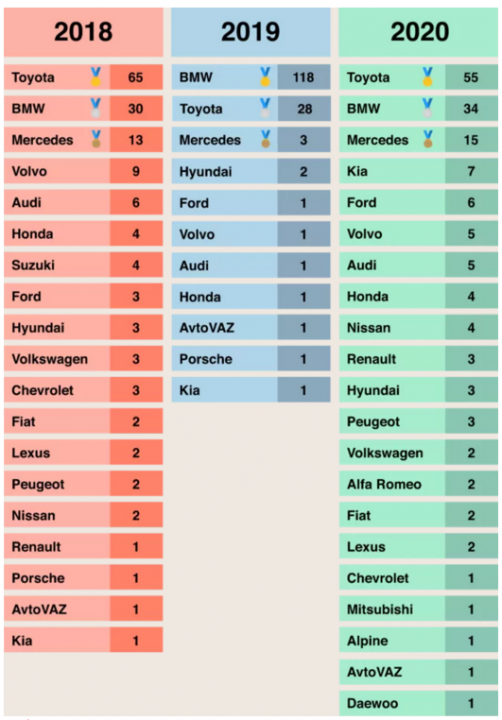
Vauxhall Mokka e (2021) review: green and keen
Not content with just offering combustion engine variants, Vauxhall has released the electric Mokka e version, too.
Still just as stark to look at and with PSA electric tech underneath, it’s already off to a decent start. As for the combustion engine variant, you can read about that one here.
This doesn’t look like a Mokka…
Right? But we promise it is. What a design leap ahead of the Mokka’s desperately dull predecessor.
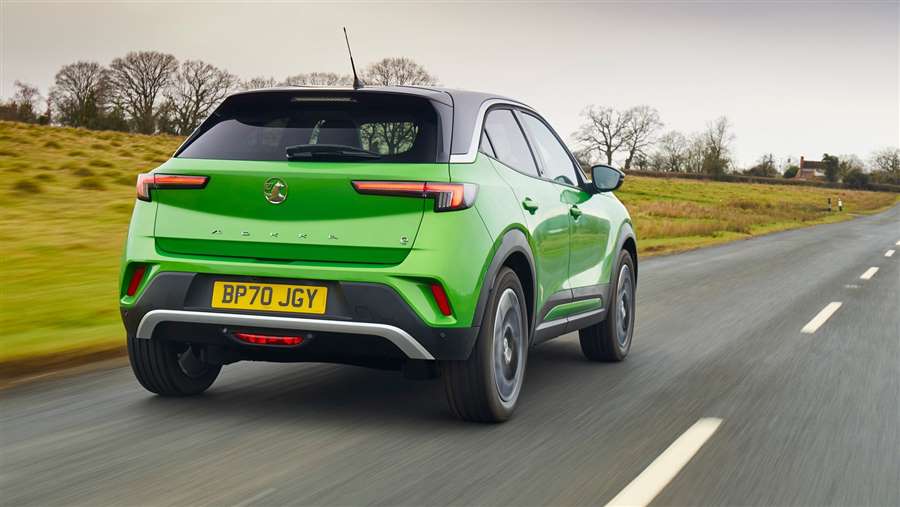
The Mokka is the first car under the Opel/Vauxhall banner to debut a new design language spearheaded by Mark Adams and his team, with the new ‘Vizor’ nose being the starkest visual differentiator. You can spec two-tone colours, with the roof and bonnet available in black and a colour called Mamba Green is available, too – Vauxhall is clearly giving a quiet nod to the Opel Manta GTE here.
Add that to many more angular lines, sharp creases and a floating roofline that’s been par for the course for modern Vauxhalls for years and it all sums up to bringing the new Mokka crossover out of the bland crossover no man’s land.
Inside, it’s much more sensible than its Peugeot cousin, but still a big step forward. Digital instruments – as part of Vauxhall’s new ‘Pure Panel’ nod clean design and some scope for a little colourful personalisation are all on offer here. There’s good adjustment in the seat – though the digital instruments might impede where is best place to put the steering wheel so you see all of the information – and, if you go for a higher trim, the seats have plenty of bolstering to keep you snug.
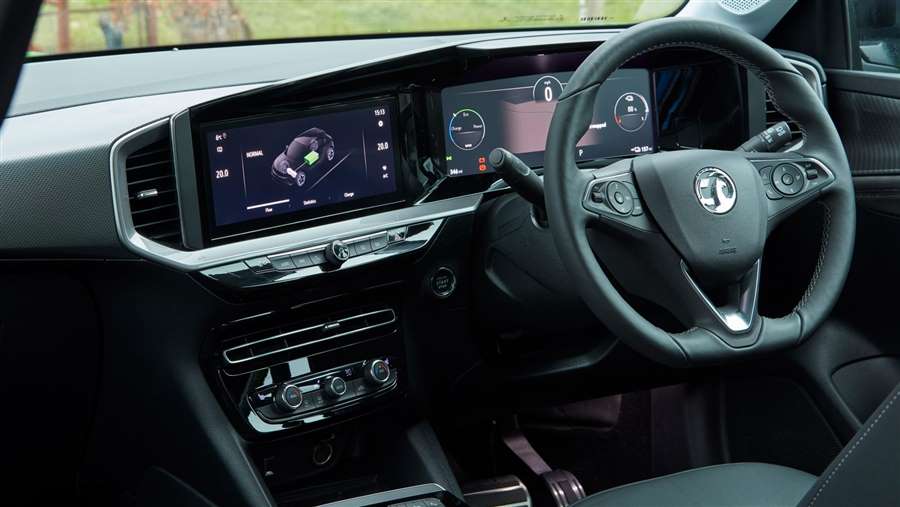
However, the rear seats are best placed for kids only – lanky adults will be jabbing their knees into the back of the seat even if they have plenty of headroom, and the 350-litre boot is around 100 litres smaller than a Ford Puma or Nissan Juke.
Any electric-specific details?
Vauxhall says the Mokka e can support up to 100kW charging capacity, claiming a near empty to 80 per cent charge is done when zapping in energy at that highest capacity. A 50kW rapid charge to a similar state takes a claimed 45 minutes, a 22kW one will take around five hours and a 7kW one is done in around seven and a half hours. Vauxhall claims up to 201 miles of range; during our test we averaged about 3.4 miles per kWh.
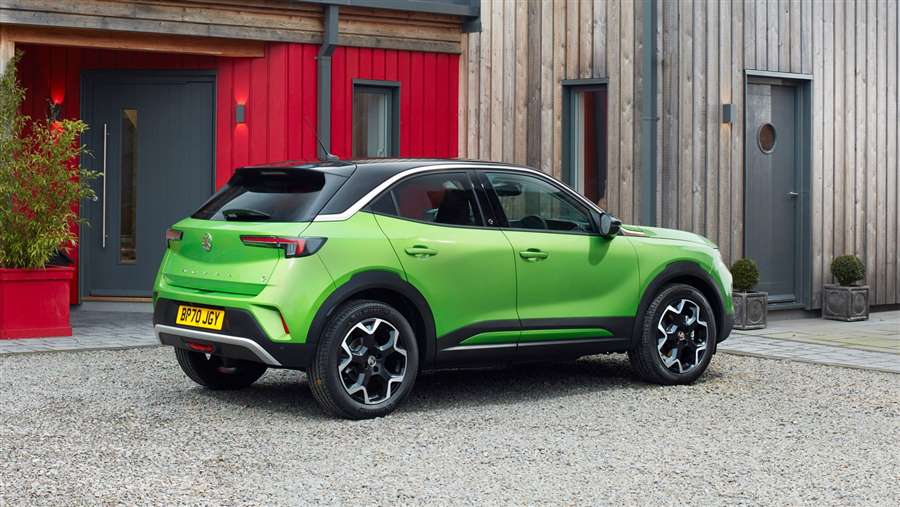
Bespoke Mokka e details are few and far between – as Vauxhall treads the same path as Peugeot in terms of making an electrified powertrain seem normal – so all you’ll notice is a power meter instead of a rev counter on the digital dials, a ‘B’ button next to the shifter for additional brake regeneration and an ‘e’ button underneath the central touchscreen to see energy flow and control when the car charges. Pressing said ‘B’ on the shifter allows harsher, if not quite one-pedal, driving – a boon for driving around town but merely par for the course in terms of EVs right now.
How does the new electric Mokka drive, then?
To say ‘just like an e-2008’ wouldn’t be telling the entire story. Let’s start with the electric powertrain: Stellantis’ (although technically Groupe PSA’s) platform houses a 50kWh battery, with a single 134bhp/192lb ft synchronous electric motor driving the front wheels.
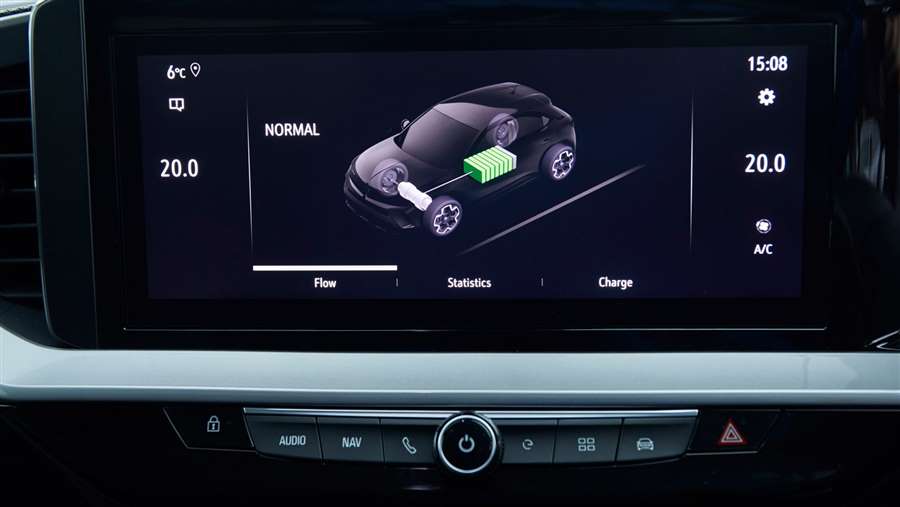
All of that is familiar, with a smooth (if not Ludicrous) surge of torque when you hoof it, gentle regeneration when coasting and a feint whine from the electric motor to go along with your progress. Vauxhall has tweaked how much power is outputted by the motor via the drive modes: in Eco, the throttle mapping is much softer and the motor generates just 80bhp and 133lb ft; Normal ups that to 107bhp and 162lb ft; prodding Sport unleashes all of the shove via a sharper throttle.
As for handling, I’d argue the Mokka e is slightly more comfortable than a combustion engine one – most likely due to the BEV powertrain’s additional weight. It’s impressively well damped and simply not as jittery as our tests with an e-2008 (or even a Puma or Nissan Juke, for that matter), compressing potholes in the road into feeling half their size when driving over them and, given the lack of engine noise, it’s a remarkably hushed experience at the wheel.
Opel/Vauxhall engineers have also clearly tweaked the e-CMP platform and the Mokka’s extensive use of PSA-based controls to their own specifications. The steering isn’t arcade racing game light – like it is in the e-2008 – with a respectable weighting up of the wheel when turning more than a quarter lock and amicable body control. And PSA’s notoriously spongey brake pedal is nowhere to be seen – the Mokka e’s is progressive and bites early. A tidy handler all-round.
Vauxhall Mokka e: verdict
A design revolution outside and an attractive proposition now, too. Granted, it’s not the most practical of small crossovers but, if you’re after a stylish electric runabout for you and your small family, you can now look beyond just Peugeot’s e-2008.
Source: carmagazine.co.uk


